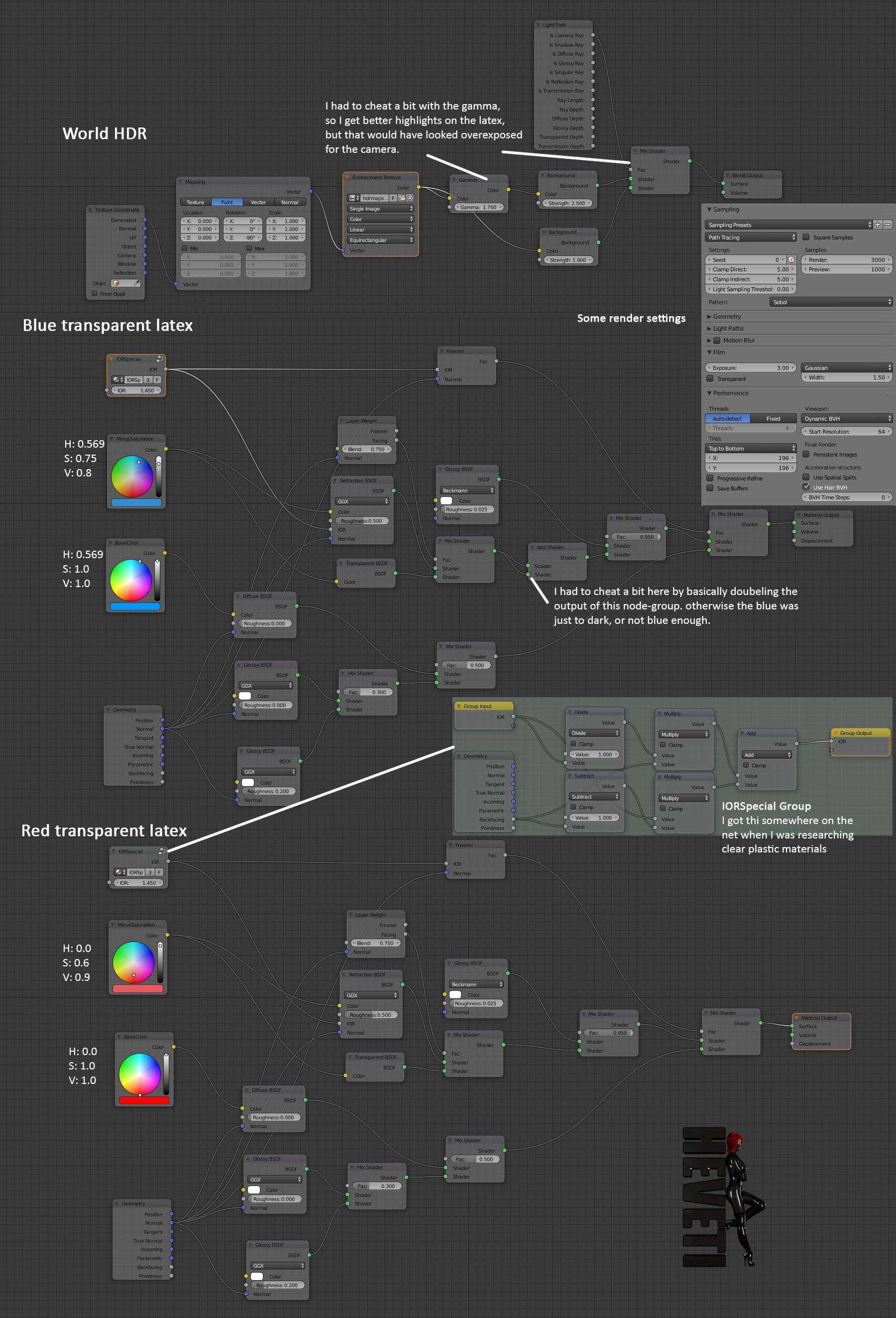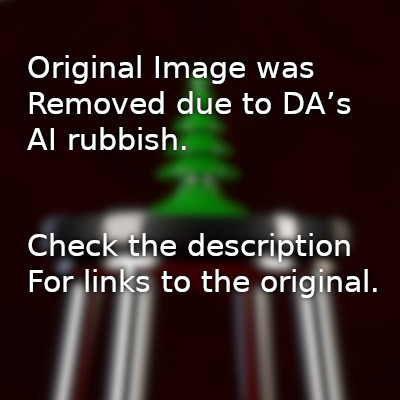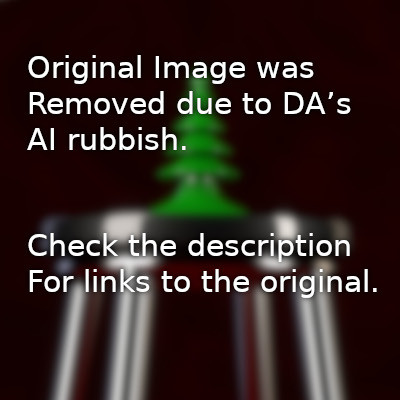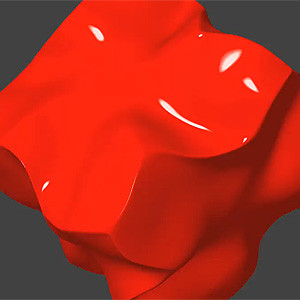HOME | DD
 heveti — Blender Cycles Material Nodes: Transparent Latex
heveti — Blender Cycles Material Nodes: Transparent Latex

#blender #blue #clear #cycles #latex #material #node #red #setup #transparent
Published: 2018-12-06 06:33:48 +0000 UTC; Views: 12558; Favourites: 30; Downloads: 0
Redirect to original
Description
Material I used in Blender for these renders of a transparent coloured latex catsuit: fav.me/dctpe6r fav.me/dctpfzo
Pixiv: www.pixiv.net/en/artworks/1028…
Twitter: twitter.com/heveti_da/status/1…
Related content
Comments: 17

Have you tried using Filmic colour management? Then you wouldn't need the "doubling output" and "gamma" cheats imo.
👍: 0 ⏩: 1

Not yet. I have seen it on YouTube and thought it looks cool. I just didn't make the change, because I was afraid I would break my old stuff. But I will switch over, probably with the 2.8 release.
👍: 0 ⏩: 0

oh awesome, I didn't know that you use blender for your work, but isn't that kind of too much for transparent material?
you can use Principled shader to almost achieve the same material without all that complicity
try checking Blender Guru on youtube, he has a good video explaining Principled shader 
👍: 0 ⏩: 1

There is a bit of trickery involved with the IOR, which you can't do with the predefined shaders. Can't use e.g. Glass either because of that. And compared of other setups I have seen over the years, it is actually not that complicated. The "transparent" part is just like 4 nodes. Most complicated part is the combinations of the different glossy shaders and that I would have to do outside the Principled shader anyway, since it dosn't give the controller I want as far as I understand it.
👍: 0 ⏩: 1

aha I see, that's cool you're doing a great job, keep it up^^
I always use Principled shader or make the textures myself with the maps, because I'm too lazy to make a complicated material using node editor XD
👍: 0 ⏩: 0

This is awesome and one of the reasons I use DA, to get some help to do this sort of stuff myself. THANK YOU!
👍: 0 ⏩: 1

Thank you very much for this, H.
I'm using Poser Superfly, which is a modified Cycles engine, so next job is to try to dechiphre this and translate it into Poser-language.
Onwards and upwards!
👍: 0 ⏩: 1

Didn't know that. Tell me, how it went
👍: 0 ⏩: 0

Isn't this a bit overcomplicated?
The Principled node has a transmission input. Well, that's not transparent enough. Just mix or add with Transparent node and you're done without noodle salad.
👍: 0 ⏩: 1

What do you mean by transmission? The Translucent node?
👍: 0 ⏩: 1

The last single value input node (gray) above Normal let light through. It's just like glass. But that's often too dark. With the math node before the Light Path node you get control of the shadow. You might want to change the IOR and the transparent color.
👍: 0 ⏩: 1

Thanks for the screenshot, now I know what you mean. I'm still using 2.78c, which doesn't have that node yet.
But I remember reading about it, and people discouraged using it for clear plastics and such, since it doesn't give enough fine controller. Especially the trickery with calculating the IOR I'm using, which let's you simply use one faced models and they behave as if they would be a thin sheet of transparent e.g. glass instead of a solid. If you want to do that, you can't even use the Glass BSDF, but have to make it yourself.
But still, I will have a look into that node in the next experiment
👍: 0 ⏩: 1

I see. You want a material without refracting light. Just combine a Principled node (Transmission = 0) and a Transparent node with an Add node. That should do the trick.
Also, your node setup should work in 2.79b just fine.
👍: 0 ⏩: 1

No, that's not it, either. You want some refraction, because you want the blurry effect of a slightly rough surface. But it should not look, like you put an object into a massive ball of glass.
But I appreciate your comments on this. It is always good to reflect and think through alternatives.
👍: 0 ⏩: 0























